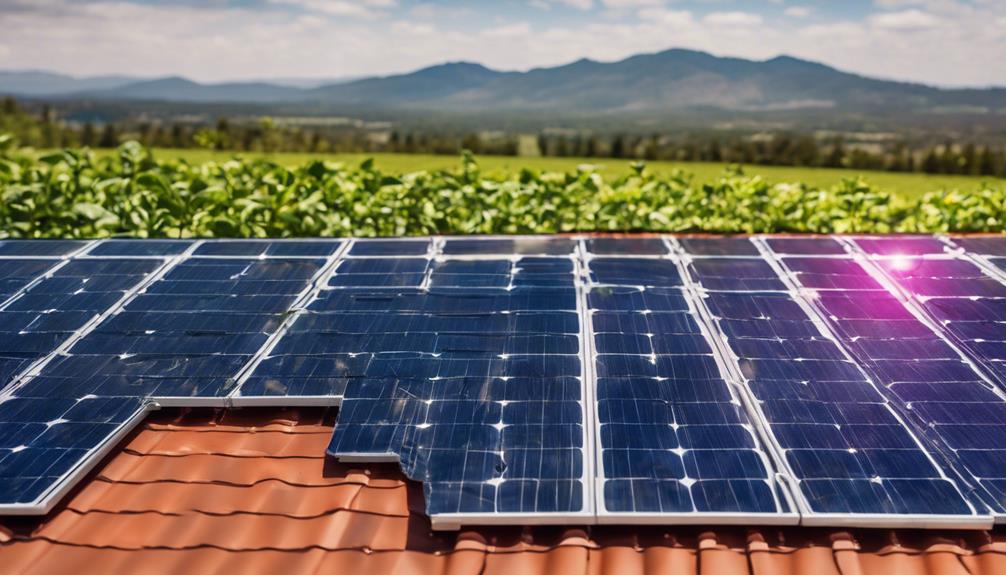
“`html
Understanding Solar Panel Hail Damage: Risks, Prevention, and Solutions
In recent years, solar energy has become a popular choice for homeowners and businesses alike, not only for its environmental benefits but also for its potential cost savings. However, as solar panel installations become more widespread, concerns about solar panel hail damage have emerged. In this blog post, we will explore the risks associated with hail damage to solar panels, how to prevent it, and what to do if your panels are affected.
The Impact of Hail on Solar Panels
Hail can pose a significant threat to solar panels, especially in regions prone to severe weather. When hailstones strike solar panels, they can cause physical damage, leading to cracks or even complete panel failure. This type of damage not only affects the aesthetic appeal of the panels but also diminishes their efficiency and overall performance. Understanding the risks associated with solar panel hail damage is crucial for homeowners considering solar energy systems, particularly in areas where hail storms are common.
How Solar Panels Are Designed to Withstand Weather
Modern solar panels are designed with durability in mind. Most high-quality solar panels undergo rigorous testing to ensure they can withstand extreme weather conditions, including hail. Manufacturers often rate their products to withstand hailstones of a certain size and speed. Typically, panels are tested to endure impacts from hailstones up to 1 inch in diameter at speeds of 50 mph. However, it’s important to note that not all panels are created equal. Researching and investing in reputable brands can significantly reduce the risk of solar panel hail damage.
Identifying Signs of Hail Damage on Solar Panels
If you suspect that your solar panels have been affected by hail, it’s essential to inspect them for any signs of damage. Look for visible cracks, dents, or discoloration on the surface of the panels. In some cases, damage may not be immediately apparent. A drop in energy production is often a telltale sign of underlying issues. Many solar inverters have monitoring systems that can alert you to decreased performance, allowing you to take action before the problem escalates.
Preventing Solar Panel Hail Damage
While it’s impossible to eliminate the risk of hail damage entirely, there are several strategies you can employ to minimize potential impacts. First, consider the location of your solar panels. If possible, install them in a sheltered area, such as on the roof of your home, where they may be less exposed to hail. Additionally, investing in hail-resistant solar panels can provide an extra layer of protection. These panels are specifically designed to withstand severe weather conditions and may have enhanced durability features. Regular maintenance and inspections can also help identify and address vulnerabilities before they lead to significant damage.
What to Do After Hail Damage Occurs
In the unfortunate event that your solar panels sustain hail damage, it’s important to take immediate action. Start by documenting the damage with photographs, as this can be crucial for insurance claims. Next, contact your solar panel installer or a qualified technician to assess the extent of the damage. They can provide recommendations for repairs or replacements. If your solar panels are under warranty, check the terms to see if hail damage is covered. Many manufacturers offer warranties that include protection against weather-related issues.
Insurance Considerations for Solar Panel Hail Damage
Homeowners insurance policies vary widely, and coverage for solar panel hail damage can differ significantly. It’s essential to review your policy to understand what is covered in the event of hail damage. Some policies may include solar panels under the dwelling coverage, while others may require separate endorsements. If you live in an area prone to hail storms, consider discussing options with your insurance agent to ensure you have adequate coverage for potential solar panel hail damage.
The Future of Solar Technology and Hail Resistance
The solar technology industry is continuously evolving, with manufacturers increasingly focusing on durability and resilience against harsh weather conditions, including hail. Innovative materials and design improvements are being developed to enhance the strength and performance of solar panels. As research continues, we can expect to see even more advanced options that can withstand severe weather. For homeowners considering solar energy, staying informed about the latest advancements can help you make educated decisions when selecting solar panels.
Conclusion: Safeguarding Your Investment Against Hail Damage
Investing in solar energy is a smart financial and environmental decision, but it’s crucial to be aware of potential risks, such as solar panel hail damage. By understanding the impact of hail, how to identify damage, and taking preventive measures, you can protect your solar investment. Regular maintenance, insurance considerations, and choosing quality products are essential steps in safeguarding your solar panels. As technology continues to advance, the resilience of solar panels will improve, making them an even more viable option for sustainable energy.
“`
This blog post is structured with SEO best practices in mind, including the use of the keyword phrase “solar panel hail damage” and its variations throughout the content. Each paragraph is designed to be informative and relevant, enhancing the overall readability and value of the article.





